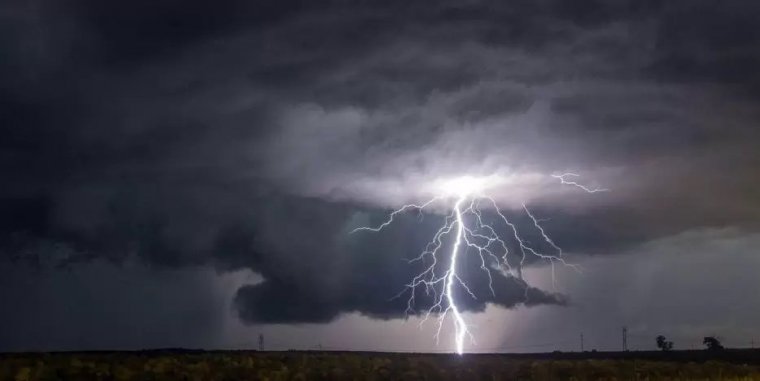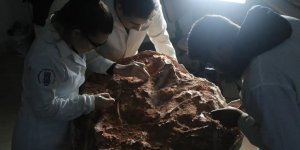| News / Science News |
When lightning strikes, check for wind turbines
Minutes after lightning lit the dark evening sky in the middle of a blizzard, a team of seven students and researchers rapidly unzipped a bright yellow bag the size of a small car to release a giant white balloon.

A cloud-to-ground lightning strike during a nighttime thunderstorm in the Midwest. Photo: Jacob DeFlitch, Meteorologist
This daring feat was part of a project to study how wind turbines near Lake Ontario can intensify lightning that happens during lake-effect storms.
The balloon was equipped with instruments to measure electrostatic charge, temperature, humidity and windspeed as it ascended into the clouds in November 2022.
"Although we've been studying lake-effect storms for a while, we're still learning new things," said Scott Steiger, a professor at State University of New York at Oswego who is leading the project. These storms occur when cold air passes over warmer water, picking up warmth and moisture and fueling huge rainfalls and localized snowstorms.
"This work can help inform weather forecasts and protect wind turbines from damage."
Steiger and his collaborators, including many students, have been working closely with the local community throughout the project. In addition to successfully launching 16 giant weather balloons, the team also deployed 16 sensors that could detect lightning on local properties, including airports, farms and homes.
Steiger recently joined a local podcast to discuss the project and its potential impact.
"Our current project is really a continuation of another NSF-funded project," Steiger said.
During previous research also on lake-effect systems, Steiger and his collaborators noticed that lightning often struck near wind turbines, prompting the current focus on the relationship between the two. (U.S. National Science Foundation)
YOU MAY ALSO LIKE





